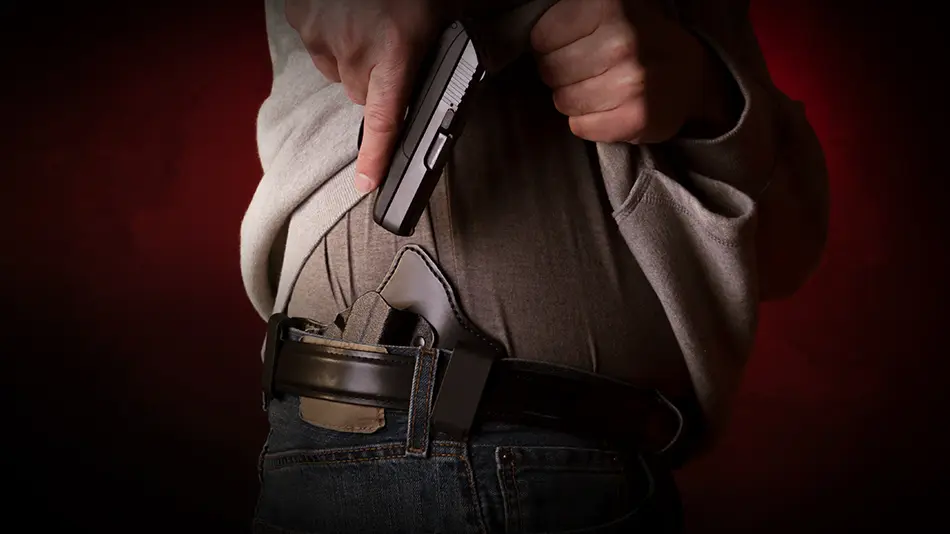Hi, it’s Wilkes Ellsworth, your Independent Program Attorney for Ohio, here again to discuss another topic having to do with firearms—specifically, warning shots and whether or not they are legal. In any discussion about warning shots, we should first understand the basic concepts of Ohio law as they relate to the use of deadly force self-defense, and how those concepts determine the legalities surrounding warning shots.
Ohio Supreme Court Precedent
The Ohio Supreme Court states, “To establish self defense, the following elements must be shown:
- The slayer was not at fault in creating the situation giving rise to the affray;
- The slayer has a bona fide belief that he was in imminent danger of death or great bodily harm, and that his only means of escape from such danger was the use of such force; and
- The slayer must not have violated any duty to retreat or avoid the danger.”
Warning shots indicate the necessity of deadly force
You’re saying, “But I didn’t shoot anybody. I just wanted to scare them, so why tell me this when what we are talking about is warning shots?” Remember, when you draw that firearm or long gun, you are making the determination that you can satisfy those elements I just stated. Regardless of your intentions to shoot over the head of the other person or in some other direction to scare them, you are indicating to law enforcement that you believed deadly force was necessary and that you could have justifiably used it to kill the other person had you chosen to do so.
Member Case takes a turn
If it turns out it was not as you thought, you could face a slew of charges ranging from misdemeanors to felonies. Let me give you an example of one that closely resembles an actual member’s case whose representation I recently finished, as it exemplifies the potential legal pitfalls of warning shots. The member was faced with very serious felonies from what initially was construed by police as a potential warning shot.
The member was charged with a lower-level felony for discharging into a habitation, but when the case came back from grand jury, the state had elevated the charges to felonious assault. This is a perfect example of how a warning shot could be misconstrued by prosecutors and law enforcement leading to serious legal troubles for the shooter. After all, ORC 2903.11- Felonious Assault– states, “No person shall knowingly do either of the following:
- Cause serious physical harm to another, or to another’s unborn; or
- Cause or attempt to cause physical harm to another, or to another’s unborn, by means of a deadly weapon or dangerous ordnance.”
It’s the second one that is the problem when it comes to warning shots, and exactly what the prosecution focused on in their case against the member. The prosecutor will likely, and did in our case, argue that firing a warning shot is just solid evidence that you really weren’t faced with a threat level necessary to justify the use of deadly force in the first place, or you would have directed your shot at the threat.
Criminal and Civil Liability
Even if they can see that you weren’t trying to shoot the other person, or don’t prove intent to harm at the trial, you could be successfully prosecuted for such things as the aforementioned discharging into a habitation, which is a felony or, for example, discharging within city limits, or discharging a firearm on or near a prohibited premises, both serious misdemeanors.
Furthermore, you are always responsible for where these rounds are going. Criminal liability is not the only concern, and I could be representing you for civil damage claims as a result of ricochets, which hit an innocent person or damages property. Those rounds must come down somewhere, and you accept responsibility for where they go when you fire.
If you are genuinely in fear for your life or for the life of another in a third-party defense situation, then your best course of action is to direct your firearm at the person or persons at the root of the threat, and avoid warning shots. While in theory you might think they are a good idea, they generally are not.
If you have any questions about warning shots or any other topic for that matter, please do not hesitate to call U.S. LawShield and ask to speak to an Independent Program Attorney.





What if the incident is on video and the person was clearly in danger as was her child and, she wasn’t charged with any type of assault just for discharging a fire arm and a gun speck, she even had a ccw